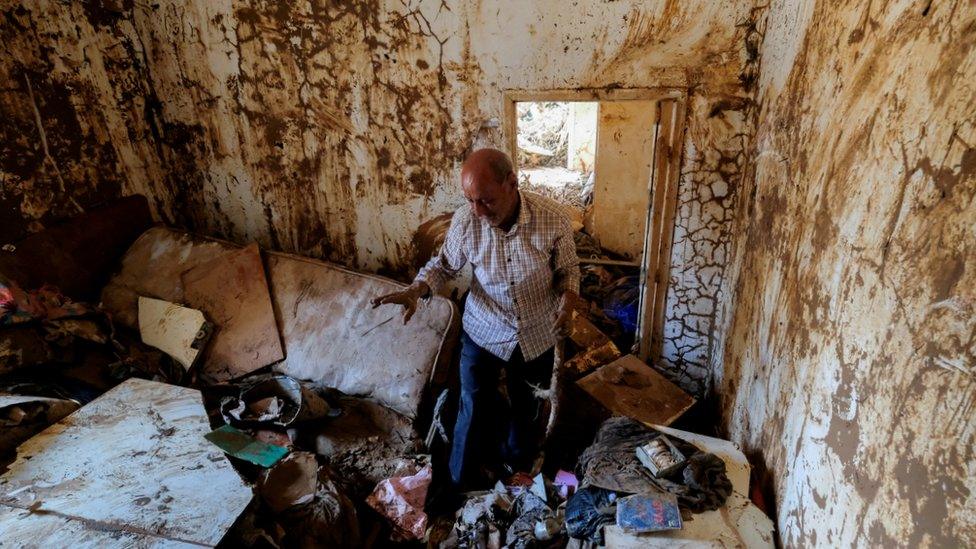Climate change played major role in Libya floods
- Published

Hundreds of Derna residents protested against local authorities, on Monday, more than a week after heavy floods killed nearly 4,000 people in the city
Climate change made the storm that devastated the Libyan city of Derna, killing thousands of people, up to 50 times more likely, experts say.
Up to 50% more rain had fallen as a result of human-caused greenhouse-gas emissions, climate scientists at the World Weather Attribution group, external found.
Years of conflict in the region compounded the vulnerability of people to flooding, the WWA report says.
And it turned the extreme weather into a full-scale humanitarian disaster.
The scientists used computer simulations to assess how much more likely such a storm was now compared with before the 1.1C of warming climate change has already brought.
But they cautioned a lack of data, particularly in Libya, meant considerable uncertainties in their findings.

Some Greek regions had more than 900mm of rain - more than normally seen in a whole year
Storm Daniel, which brought the deadly rains, had already dumped 910mm (35in) of rain on parts of Greece, Bulgaria and Turkey, killing 28 people.
And the study found climate change had made this up to 10 times more likely, bringing up to 40% more rain.
Storms of this intensity are now reasonably common for this region and can be expected once every 10 years, it warns.

Hassan Kassar, 69, says he lost his daughters, two of his sons and his granddaughter in the floods. Revised UN figures estimate nearly 4,000 people were killed
But the weather event in northern Libya was much more exceptional, bringing a storm of an intensity such as would be expected to hit northern Libya once every 300-600 years.
As Storm Daniel travelled slowly over the Mediterranean, it drew additional energy from sea temperatures two to three degrees above the September average.
"Storm Daniel was [a] low pressure [weather system], as we usually have in the Mediterranean," Kostas Lagouvardos, from the National Observatory of Athens, says. "It was not very deep - but it was very early in the season and it was stagnant and stayed over the south Ionian Sea for four, five days."
That extra warmth fuelled stronger winds and meant the air could hold more moisture.
And when it hit the northern coast of Libya, it dumped an estimated 400mm of rain on Derna in just 24 hours.
The average for September in the city is just 1.5mm, according to Nasa's Earth Observatory.
The huge impact shows how intense weather can combine with a vulnerable population with disastrous consequences, the scientists say.
In Libya, the ousting of Libyan leader Col Muammar Gaddafi, in 2011, was followed by political instability and civil war.
Two dams in the river above Derna were old and poorly maintained. Many houses had been built on the flood-plain. And when they burst, tens of millions of cubic metres of water poured into the city, sweeping away entire neighbourhoods.
The scientists warned their findings had large mathematical uncertainties, as:
the events were over relatively small areas
limited data was available
most climate models do not represent rainfall on these small scales well
"After a summer of devastating heatwaves and wildfires with a very clear climate-change fingerprint, quantifying the contribution of global warming to these floods proved more challenging," one of the study's authors, Friederike Otto, of Imperial College London, said.
"While we have some weather station data over Greece, we don't have any weather station data over Libya."
Instead, the scientists had to rely on data based on satellite readings.
But they are confident climate change played a significant role, because there is very strong evidence higher temperatures lead to heavier rainfall and other studies have shown climate change increases the intensity of weather systems such as Storm Daniel.